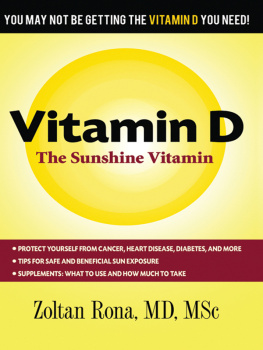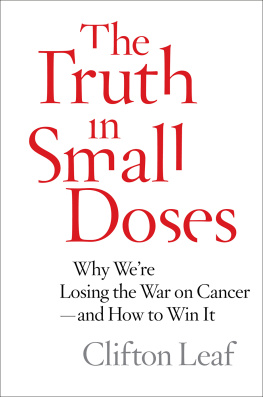I sit down to write this e-book; and as I sit, I realize it will be so easy to write, there will be no writers block, in fact I expect to have the whole book written in maybe just 4 days!
Why? Because I am so excited to tell you what I have found out over the last year with my so-called (if you listen to doctors) dangerous experiment, that I cant wait to get it all down!!
The Whole Book in a Nut Shell
And let me spill some of the really interesting tidbits first right now before we get started, just to whet your appetite. After all my experimentation and researching and thinking about Vitamin D3, I have stumbled upon a very simple theory about D3 that is elegant in its simplicity.
This simple theory can be created from combining just a few simple facts and a little common sense. This simple theory just might be able to explain the cause of, or how to prevent most of the diseases and health problems that humans face (with the exception of aging-related diseases and syndromes from genetic mutations). Everything else it seems, I have found, might just be preventable or curable by careful, occasional super-high dose Vitamin D3 therapy.
Okay, I will now describe the major relevant facts and ideas regarding what I call The Human Hibernation Syndrome which is caused by your body not getting enough sun and thus acting as if it is preparing for winter.
Fact 1:
Vitamin D3 is not a vitamin! It is actually a seco-steroid hormone that affects almost all the cells in your body by altering the expression of your genes. Vitamin D3 receptors are found in almost all the cells of your body.
Fact 2:
Vitamin D3 is the active hormone form of Vitamin D and people used to generally get most of their Vitamin D3 from exposing their skin to the sun. The sun activates an inactive form of Vitamin D which is actually very similar to and made from cholesterol, and turns it into the functioning hormone. (There are a few other minor steps in the kidneys and liver but we can ignore them for our purposes). Vitamin D2 and D1 are much less active plant-derived forms of the hormone that you can get from your diet if you eat amongst other things UV irradiated mushrooms. D1 and D2 are considered inferior synthetic, weak, versions of the animal hormone D3. (There are a large number of hormones that are made from cholesterol as the starting point. Thats why they call them steroids, and it includes hormones such as, Vitamin D3, testosterone, estrogen, DHEA, progesterone, cortisol, etc. They are all very similar looking except for a few tiny tweaks here and there).
Fact 3:
People generally make a lot more Vitamin D3 with their skin in the summer sunny months than in the dark winter months. Although D3 can be acquired from the diet and diet now might be the primary source of D3 for many, most people used to get the majority of their D3 from sun exposure.
Fact 4:
Vitamin D3 deficiency is associated with a huge number of diseases and disorders. Let us focus just on obesity, depression, arthritis, and susceptibility to the common cold for now.
Now here is the logic: In the spring and summer your body is exposed to lots of sun, and thus your Vitamin D3 levels are high and rising. Your body, from an evolutionary perspective believes that food is abundant, days are long, and everything is good. So the sunshine hormone D3 tells your body its okay to burn a lot of energy and get things done, because food and vitamin resources will be available. Thus from D3 you get lots of energy; it keeps you active; keeps your hunger under control, and keeps you healthy (as will be described shortly).
When winter arrives in the northern latitudes northern residents have a dramatic reduction in the production of D3-the sunshine hormone signal. From an evolutionary perspective your body now expects a good chance of famine conditions that often occur around winter when resources are scarce. (Just ask the Donner party about winter famine! The pioneers began to starve to death in 1846 on a Nevada mountain trail in a blizzard. They were reduced to cannibalism to survive, leaving just 48 survivors out of 87 in the original party!)
Now, if you happened to be a northern bear, declining and low D3 would be one of the signals to tell you to begin to get ready to hibernate. In fact in black bears Vitamin D3 levels are at about 23 nmol/L in the summer (around 10 ng/mL which is the scale we usually use) and decline to 8 nmol/L (or 3 ng/mL) during hibernation with the drop in D3 being offset by a large increase in an inactive form of Vitamin D, which in the bears case is a pseudo-Vitamin D2. A bear preparing for hibernation will begin to eat as much as possible to put on as much weight as it can to get ready to wait out the winter. Female bears often increase their weight from their lowest summer weight to hibernation weight by 70%. Many other mammals hibernate including raccoons, skunks, woodchucks, chipmunks, hamsters, hedgehogs, and bats. Most reptiles and amphibians hibernate as well as crocodiles and alligators that go for months without eating when it is cold and darker. Apparently, hibernation is a response that might have evolved in all animals or their evolutionary ancestors from time to time. With this in mind, it is highly likely that us humans have some sort of ancient but semi-suppressed hibernation mechanisms locked up in our DNA.
Hibernation
If you doubt that humans might have evolved from a hibernating ancestor, you would also likely doubt that dogs evolved from a hibernating canine-right? Well take a look at the Raccoon Dog-considered a primitive/ancient version of the canine and this dog still exists today:
An excerpt from the Wikipedia entry for Raccoon Dog:
Raccoon dogs are the only canids known to hibernate in winter. In early winter, they increase their subcutaneous fat by 1823% and their internal fat by 35%. Animals failing to reach these fat levels usually do not survive the winter period. During their winter sleep, their metabolism decreases by 25%. In areas such as Ussuriland and their introduced range, raccoon dogs only hibernate during severe snowstorms. In December, their physical activity decreases once snow depth reaches 1520 cm, and will not vacate their burrows for more than 150200 m. Their daily activities increase during February when the females become receptive and when food is more available. [2]
So we must ask is it possible that humans have a hibernation response somewhat similar to other mammals where when we are affected by low levels of D3 (from low levels of sunshine hitting our skin) that we crave carbohydrates, and put on lots of weight, and then we get depressed so that we slow down and dont waste so much precious energy? Can evolution slow us down by allowing us to get sick with the common cold which is usually harmless (and to which we are normally immune in the summer) but keeps us bedridden for a week or so in the winter and thus further saves precious energy? Could evolution also want to slow us down by giving us aches and pains from arthritis to keep us housebound and to keep us from using up potentially scarce energy resources? I think the answer is YES! (Now an alternative idea to aches and pains being used by evolution to slow us down is that evolution just does not repair us completely while hibernating, but rather just enough to get by, to conserve potentially critical resources for other possible future crises- Imagine that your body knows you are about to go through a three month famine and you break your arm, will your body use all its calcium stores to fix your arm, or fix your arm just enough to get by? What if you had a second or third break during the famine months? Would there be any calcium left to fix those breaks if your body used up all your calcium on your first broken bone?-this idea will be developed later).












